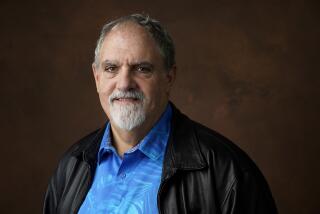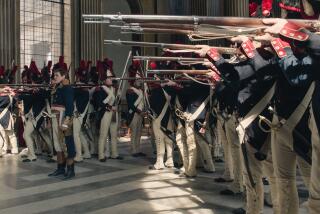Going From ‘Titanic’ to Dim Noir
- Share via
How does “Titanic’s” Oscar-winning cinematographer Russell Carpenter top that herculean achievement?
He doesn’t. After spending the better part of a year aboard the massive luxury liner, Carpenter welcomed the opportunity to shoot a smaller, more intimate craft like “The Negotiator,” starring Samuel L. Jackson and Kevin Spacey.
“When I read the script, I thought, what a wonderful break,” Carpenter says, “a psychological drama that would be shot mostly in two rooms. I needed to do something that was more like a film noir than a Hollywood glitz film. It was an antidote, stylistically, to what I had been doing.”
But every film contains its own challenge and on “The Negotiator” “the challenge would be to keep it as real as possible and still keep it visually interesting,” he says.
Carpenter envisioned a grainy semi-documentary style reminiscent of “Dog Day Afternoon,” the 1975 Sidney Lumet drama starring Al Pacino, which, like “The Negotiator,” deals with the tensions surrounding a hostage situation.
But when he arrived in Chicago for location shooting, certain adaptations had to be made. The scope of the film had expanded somewhat, with a few outdoor action sequences added. Director F. Gary Gray led him to “a canyon of buildings along the Chicago River and said, ‘Light this.’ I could have fit four Titanics into the space he was showing me.”
Unlike the controlled sound stage environment of “Titanic,” Chicago is a vibrant, crowded 24-hour-a-day metropolis and the film crew only had permission for 10 days’ shooting, most of it at night. Though most of the exteriors were along a row of office buildings, there were also some residences in the area, restricting the number of hours the film could shoot. Illuminating even a small stretch of Chicago without disrupting the city’s traffic pattern required careful planning as well as the ability to turn on a dime.
Instead of working against the city’s yellow tinged street lighting, Carpenter decided to use it to his advantage as a textural motif. “That parchment color lighting is very different than what you usually see in nighttime exteriors,” he says.
For the tense helicopter sequences, Carpenter and his electricians rigged up large portable football stadium lighting, and a unit called a “night sun” (which is exactly what it sounds like).
“We were able to locate certain alcoves on city blocks and tuck these units in and light large areas and not be seen.” Gaps were filled in by a quartet of guerrilla units--flatbed light trucks equipped with their own generators that could be sent to dark spots and almost immediately be up and running.
The rest of the film was shot in Los Angeles at Raleigh Studios where the challenge was to make sure audiences didn’t get restless during the film’s extended interior sequences. Carpenter equipped one of his camera operators with a Steadicam and allowed him to “dance around the actors.” And to add to that jangling tension, Carpenter slowly dimmed the lighting. “We start off with flat fluorescent office-building lighting. As the film went on, I kept turning off lights and bringing in more shadows to play up the contrasts.”
After back-to-back filming on “Titanic” and “The Negotiator,” Carpenter is devoting the next few months to another challenge, “being a full-time husband and a father again.”
More to Read
Only good movies
Get the Indie Focus newsletter, Mark Olsen's weekly guide to the world of cinema.
You may occasionally receive promotional content from the Los Angeles Times.










